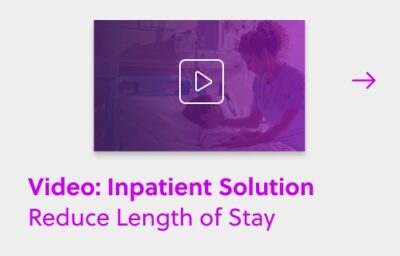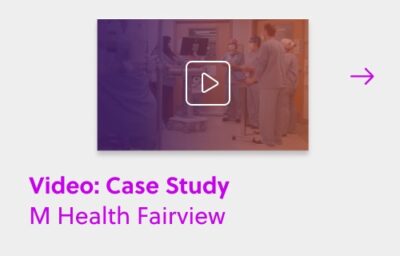One in five Americans take a trip to the emergency room for urgent care at least once a year, according to a CDC national study. Of course, some times of the day are busier than others, making it necessary to prioritize and make decisions quickly.
Frontline healthcare employees are the heart of successful patient outcomes. Artificial intelligence applied to existing hospital data can support frontline teams, allowing them to focus on what matters most, patient care. With AI for healthcare operations, staff can better understand where slowdowns occur and create strategies to improve efficiency.
The challenge: Time is of the essence
In the ED, timing can make a huge difference in a patient’s health and well-being. While 27 percent of patients are seen within fewer than 15 minutes in the ED, it often takes another 24 minutes to visit with a physician, Becker’s Hospital Review reported. In total, patients can spend around 135 minutes in the ED before being sent home. Boarding patients often spend 96 minutes before being taken to their room.
EDs have a select number of beds and medical professionals available to attend patients. As demand for these resources increases, it’s important for hospital administrators to prioritize cases and doctors effectively and ensure that no one leaves without being seen. With the right data insights, frontline teams can make proactive process changes to improve patient throughput and reduce LWBS rates.
Using AI for hospital operations
Patients that leave without receiving care impact hospital liability and revenue, making it important to care for individuals as effectively and quickly as possible while ensuring quality treatment. A significant amount of data is generated in EDs every day. What if hospital administrators could use this information to improve productivity across a wide variety of operational tasks?
AI for hospital operations offers the chance to do just that. By looking at historic and real-time data, Qventus makes data actionable and promotes proactive behavior. For example, analyzing data around elements like new patient flow, discharge rates, length of stay and even the time of year, Qventus can predict pending spikes in waiting room congestion. This information can be used to inform ED nurses and in-patient charge nurses, creating virtual collaboration to prioritize discharges at the right time.
All the while, hospital administrators have a bird’s-eye view of which patients are waiting for lab and scan results or are waiting for discharge longer than necessary. This contextual information will help allocate the right resources for each procedure and remove gap time from the hospital’s most valuable assets to drive overall efficiency.
Hospital administrators can also use the AI tools to understand what behaviors are creating bottlenecks. For example, physicians might order lab tests without checking recent orders, making it necessary for patients to wait longer before getting treatment or being discharged. A Qventus recipe can highlight these trends and nudge healthcare employees to make adjustments like only ordering labs when necessary. With the right information in hand, physicians are freed up to be in the right place at the right time, and it can save patients and the hospital from the costs associated with unnecessary testing.
Frontline healthcare employees must be in the right place at the right time to provide the best care and improve ED throughput. Lack of clarity into operational flow and processes that help teams coordinate can create major bottlenecks in the admittance and care processes. With AI solutions, healthcare employees can effectively create strategies to improve efficiency and focus on quality patient care.


